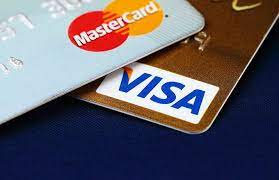Credit cards have become an integral part of our daily financial transactions, providing convenience and flexibility in managing our expenses. Among the numerous credit card options available, Visa and Mastercard stand out as two of the most widely accepted and utilized brands globally. In this article, we will delve into the intricate details of Visa and Mastercard, comparing their features, advantages, and potential drawbacks to help you make an informed decision when choosing the right credit card for your needs.
The Genesis of Visa and Mastercard:
Visa and Mastercard both originated in the United States in the late 20th century. Visa, formerly known as BankAmericard, was introduced by Bank of America in 1958. On the other hand, Mastercard, initially called Master Charge, was established by a group of California banks in 1966. Over the years, both companies have evolved and expanded their services to become global leaders in the credit card industry.
Global Acceptance and Network:
One of the primary factors that influence the choice between Visa and Mastercard is the global acceptance and reach of each network. Both companies have a vast network of merchants and ATMs worldwide. However, Visa tends to have a slightly broader acceptance globally, with its cards being welcomed in more countries and locations compared to Mastercard. This can be a crucial consideration for frequent travelers or individuals who make international transactions regularly.
Card Variants and Levels:
Visa and Mastercard offer a range of card variants and levels to cater to diverse customer needs. Both companies provide standard credit cards, premium cards with enhanced features, and co-branded cards in collaboration with various businesses and organizations. Premium cardholders often enjoy additional benefits such as travel insurance, concierge services, and reward programs. When choosing between Visa and Mastercard, it’s essential to explore the specific offerings of each brand and select a card that aligns with your lifestyle and preferences.
Interest Rates and Fees:
Credit card interest rates and fees can significantly impact your overall cost of borrowing. Both Visa and Mastercard do not issue credit cards directly to consumers; instead, they partner with banks and financial institutions that issue the cards. As a result, the interest rates, annual fees, and other charges associated with a Visa or Mastercard can vary depending on the issuing bank. It is crucial to compare the terms and conditions of specific credit cards offered by different banks to make an informed decision on the most cost-effective option.
Security Features:
Security is a paramount concern in the realm of credit cards, considering the rising instances of identity theft and fraud. Both Visa and Mastercard employ advanced security features to protect cardholders. The introduction of chip technology (EMV) has significantly enhanced the security of credit card transactions, reducing the risk of counterfeit fraud. Additionally, both companies offer zero-liability policies, ensuring that cardholders are not held responsible for unauthorized transactions. When it comes to security, Visa and Mastercard are on par with each other, providing peace of mind to their users.
Rewards and Benefits:
Credit card rewards and benefits play a crucial role in attracting and retaining customers. Visa and Mastercard, through their partnership with issuing banks, offer a variety of reward programs, cashback incentives, and travel perks. The specific rewards can vary widely among different credit cards, even within the same network. Some cards may focus on travel rewards, offering airline miles and hotel stays, while others may provide cashback on everyday purchases. To determine which network offers the best rewards for your spending habits, it’s essential to compare the features of specific credit cards.
Innovation and Technology:
Both Visa and Mastercard continually invest in innovative technologies to enhance the convenience and security of their payment systems. Contactless payments, mobile wallet integration, and biometric authentication are some of the advancements that have revolutionized the credit card industry. Visa has been at the forefront of developing contactless payment solutions, while Mastercard has focused on fostering partnerships with technology companies to integrate their services seamlessly. The ongoing competition between the two giants has spurred rapid advancements in payment technology, benefitting consumers with more efficient and secure payment options.
Merchant Acceptance and Discounts:
The success of credit card networks heavily depends on their ability to attract merchants. Both Visa and Mastercard boast extensive networks of merchants globally. However, the agreements and partnerships with specific businesses can vary between the two. Some merchants may have exclusive arrangements with one network over the other, influencing the cards accepted at their establishments. Additionally, both Visa and Mastercard occasionally offer exclusive discounts and promotions with specific merchants to incentivize card usage. It’s advisable to consider the prevalence of your preferred card network among the merchants you frequently visit to maximize potential discounts and benefits.
Conclusion:
In the Visa vs. Mastercard debate, there is no one-size-fits-all answer. The choice between these two credit card giants depends on individual preferences, spending habits, and specific card offerings from partnering banks. Visa tends to have a slightly broader global acceptance, while Mastercard is renowned for its innovative partnerships and technology integrations. Ultimately, the key is to thoroughly research and compare the terms, rewards, and benefits of specific credit cards issued by different banks within each network. By doing so, you can make an informed decision that aligns with your financial goals and lifestyle.

